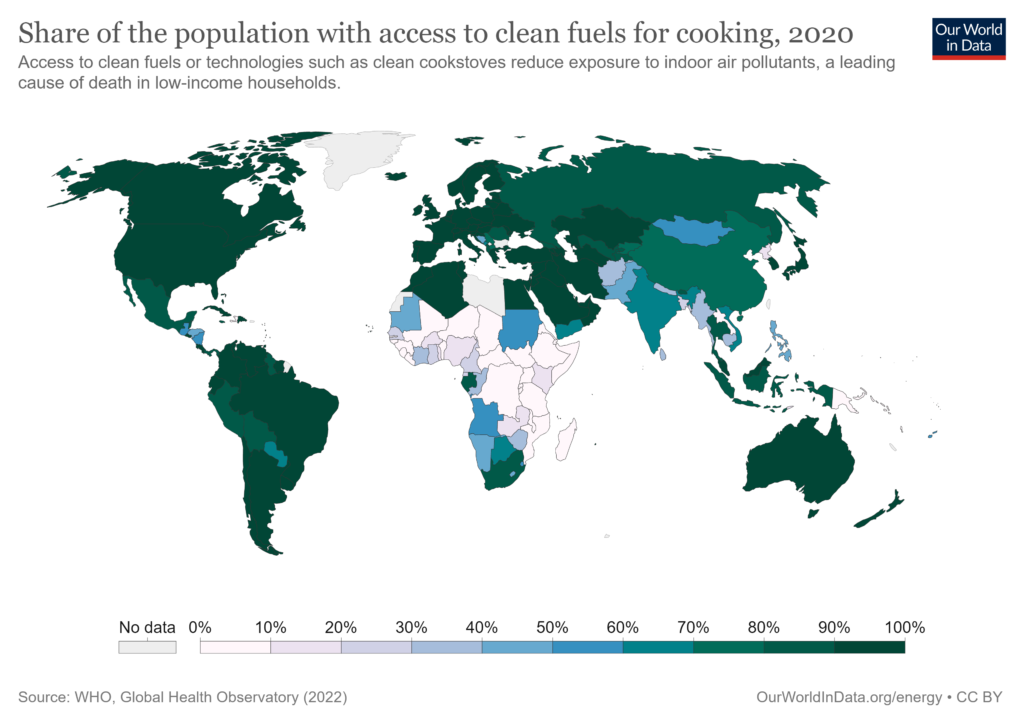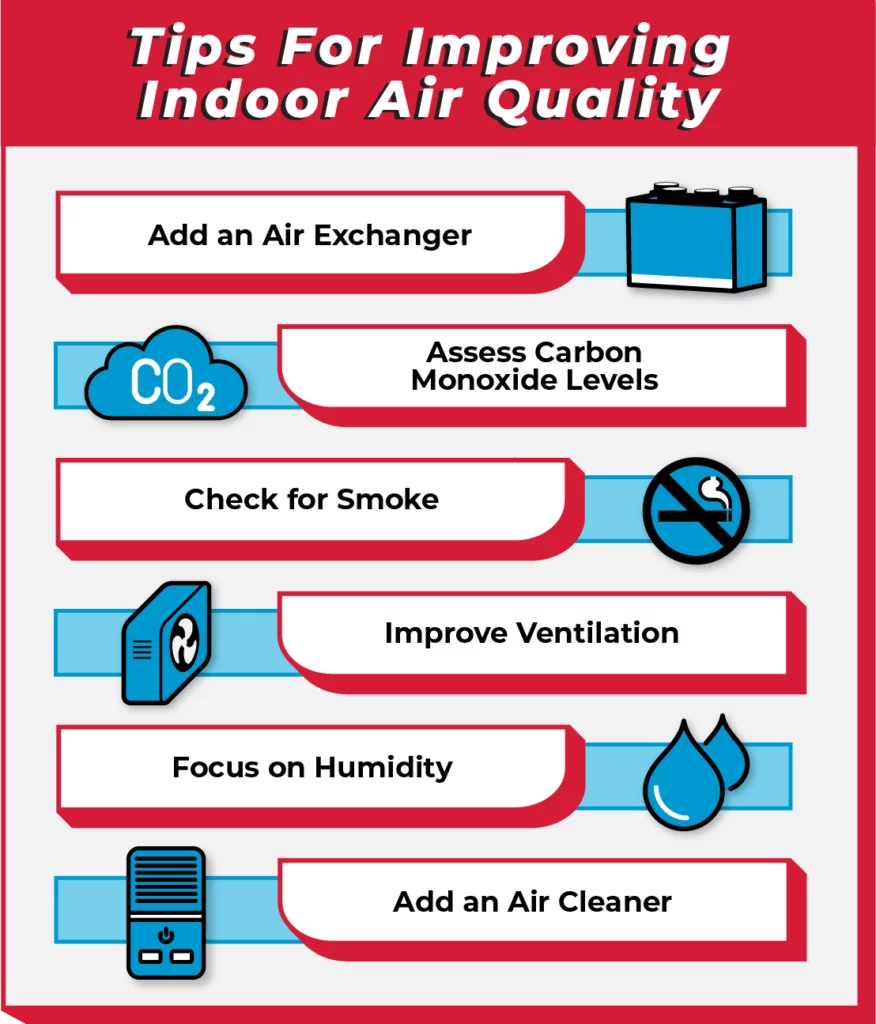How To Improve Indoor Air Quality – 7 Effective Ways
Graphic by GoodStudio via ShutterStock
15 September 2022 – by Eric Koons Comments (0)
Improving indoor air quality should be a global priority. Currently, indoor air pollution accounts for 4.1% of global deaths, with the highest rates in Sub-Saharan Africa and Asia. Additionally, a major contributor is the lack of access to clean cooking fuels in these regions.
You can bring the flow of fresh air into the house for natural ventilation and improve air quality. Poor ventilation can cause health risk and other indoor air problems and damage overall air quality. Remember that indoor air quality is important as outdoor air quality for health and the environment.

How Does Residential Air Quality Affect Health?
The health impacts of poor air quality are substantial because indoor air pollution is the eighth most significant risk factor for disease. Studies show that air pollution accounts for 2.7% of the global disease burden, increasing to 4% in low-income countries. Common health issues include:
- high blood pressure risk,
- cardiovascular issues,
- PM particles build up in the lungs and other tissue, leading to bronchitis and other respiratory issues,
- kidney-function degradation and
- cognitive development issues
What Are the Five Main Factors that Affect Indoor Air Quality?
Outdoor air pollutants are indeed also found in homes, but there are other harmful chemicals that we generate from our daily activities. Perfumes, cooking and ozone-based air purifiers all add to the diverse list of indoor air pollutants.

1. Combustion Products and Smoke
Combustion creates harmful by-products like carbon monoxide and particulate matter. Additionally, combustion practices differ around the world, with a noticeable correlation between income level and fuel accessibility. The lower the income bracket, the higher the likelihood that a household uses solid fuels, like wood, coal or charcoal.
Indoor smoking is also a significant contributor to indoor pollution. Tobacco products release several harmful fumes and gases in addition to particulate matter. Smoking is a leading risk factor for premature death, with 8 million deaths annually. Secondhand smoke is not much safer, with 1.2 million deaths every year.
2. Natural Substances and Fumes
Natural sources of air pollution can trickle inside through cracks or mechanical ventilation systems. Radon, methane and other substances are common pollutants inside and outside. Additionally, the proximity to industrial facilities and factories almost always increases the diversity and concentration of pollutants in the ambient air.
3. Microorganisms
There are also airborne microorganisms that can impact your health. These include bacteria, viruses and mould spores. In addition, dust mites, parasite larvae and eggs can occasionally be found in homes with carpets and pets. An air purifier or air cleaner can remove these pollutants.
4. Building Materials
Another primary source of air pollution is building materials. The products used in homes can, directly and indirectly, enter the air. These include compounds breaking down, like asbestos released from insulation, and new materials, like chemical off-gassing from manufactured composites.
5. VOCs – Volatile Organic Compounds
Volatile Organic Compounds (VOCs) are also a leading source of indoor air pollution. These human-made chemicals are sometimes water soluble and can cause many health hazards. These issues include eye and throat irritation, headaches, dizziness and lung issues. Meanwhile, common sources of VOCs include paint, aerosols and insecticides.
7 Ways To Improve Indoor Air Quality at Home (in Offices or Buildings)

Luckily, there are some easy ways to improve indoor air quality. As a result, improving poor indoor air quality is a simple way to protect your health and offset various medical conditions. Here are seven of the best ways to improve indoor air quality.
- Targeting indoor pollutants at the source by cutting out products and practices that you know produce air pollution. For example, using electric cooking systems can limit the use of natural gas, butane and kerosene.
- Moving pollutants outside. Activities that generate pollutants should be done outside. This includes sanding and painting, which release fumes and particulate matter.
- Improving mechanical ventilation by circulating clean outside air through open windows and doors. Beware that this can do more harm than good in regions with high outdoor air pollution, like some major Asian cities. Also check air ducts.
- Implementing forced mechanical ventilation uses fans or other powered systems to force air to circulate within a structure, like an HVAC system. Although this means higher energy use for heating systems and air conditioning systems, adding an air-to-air heat exchanger can help keep the costs low.
- Filter the air. Several commercial air filters can help keep indoor air safe and free of most particulate matter. They are not as good with fumes and vapours. Most air conditioners have an air filter for clean air flow.
- Choosing the right products. Non-perfumed cosmetics, organic deodorants with no aerosols and bleach-free cleaning products can significantly reduce the indoor air pollutants.
- Limit indoor plants. There is no evidence to suggest house plants significantly reduce air pollutants or improve air quality inside the building. However, moist soil can promote mould growth and other microorganisms.
Household Air Quality Is Important for Health
With all this in mind, it is safe to conclude that good air quality is essential for our health. The sheer number of indoor air pollutants testifies to the complexity of indoor air pollution issues. A number of healthy habits and the use of wide-scale and commercial, residential products can improve indoor air quality, especially in developing countries where the issue is most prominent.

by Eric Koons
Eric is a passionate environmental advocate that believes renewable energy is a key piece in meeting the world’s growing energy demands. He received an environmental science degree from the University of California and has worked to promote environmentally and socially sustainable practices since. Eric’s expertise extends across the environmental field, yet he maintains a strong focus on renewable energy. His work has been featured by leading environmental organizations, such as World Resources Institute and Hitachi ABB Power Grids.
Read more



